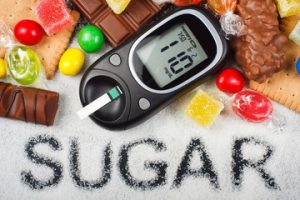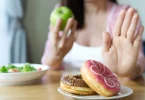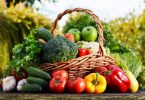Insulin resistance and high blood sugar are linked to prediabetes, diabetes, and complications, and what you eat dramatically affects your blood sugar levels. Certain foods increase insulin resistance or cause unhealthy spikes in your blood sugar in people with prediabetes or diabetes. These are 10 foods that are raising your blood sugar, and what you can choose instead.
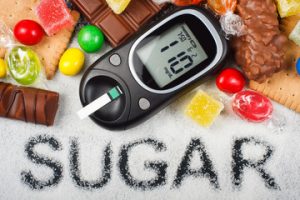
Foods that are raising your blood sugar levels
10 Foods That Are Raising Your Blood Sugar – and What to Eat Instead
1. Soft drinks.
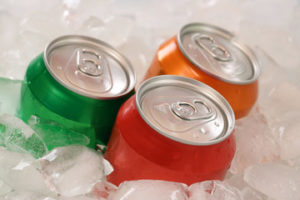 ]
]
The first item on the list is not food, but it is so common and so harmful for blood sugar that it easily takes the top spot. Soft drinks are the dubious winners of this “bad-for-you” list. They are nothing but sugary water with a few chemicals added for flavour and colour. Study after study links soft drinks to insulin resistance and diabetes, not to mention obesity, tooth decay, kidney disease, osteoporosis and poor bone health, and even gout.
Other sugar-sweetened beverages are just as bad. Along with soft drinks, energy and sports drinks, sweet tea, syrup and sugar-sweetened coffee drinks, and juice drinks are lying in wait to harm you. Instead, hydrate with sugar-free, low-calorie or calorie-free beverages and drinks such as water, or decaf unsweetened coffee or tea.
2. Bread.
Bread does not have to be bad, but the way you are eating it may be turning it into an unhealthy food. The first mistake is choosing refined white bread with a high glycemic index (hello, blood sugar spikes). Next up is letting it bump up your weight when it simply adds extra calories, such as when you order a foot-long instead of a 6-inch sub sandwich, get a 4-oz. Bagel (that’s 4 full servings), or eat a few hundred calories worth of breadsticks before your meal or with your already-carb-laden pasta or pizza. Speaking of extra calories, slathering butter on that bread does not help, either.
There are plenty of ways to keep bread in your life, healthily, or swap it out without missing it. Choose whole-grain bread when you can to lower the glycemic index and to get more natural nutrients, including dietary fibre. Keep portion sizes in check by having only a slice or two, an English muffin, or a half a bagel at one sitting. Finally, consider alternatives, such as raw vegetables instead of breadsticks or dinner rolls to munch on before a meal.
3. Potatoes.
White potatoes can be a serious problem if you have diabetes. Eat these starch-laden vegetables plain, and they spike blood sugar. Eat them in another common way, such as buttery mashed potatoes, potato chips, French fries, and hash browns, and they deliver extra fats in addition to the starch, totalling way too many calories, not to mention the link between bad fats (think: butter and fats from frying) and insulin resistance.
You have some healthier options. One is to prepare potatoes more healthily to lower their glycemic index and avoid the extra calories and fat in fried potatoes. For example, roast or bake potatoes instead of boiling or frying them, and serve them with feta cheese and broccoli. The protein and fibre will lower their glycemic index.
Another strategy is to swap healthier foods for potatoes, such as in the following examples.
- Mashed potatoes: puree cooked cauliflower or turnips instead of potatoes, and use Greek yoghurt to add creaminess.
- French fries: bake sweet potatoes or zucchini sticks with a drizzle of olive oil.
- Potato chips: bake kale or radish chips, or munch on raw vegetables.
- Hash browns: use carrots and bake instead of fry.
With a bit of thought, you can get the same pleasure without the hit to your health.
4. Burgers.
Fast food tends to be fatty, starchy, salty, high in calories, and often sugary. These all spell trouble for blood sugar. Burgers are a good representation of fast food, with their fatty beef patties and mayo, butter, or special sauces, salty pickles and mustard, and starchy buns. Most fast food has a similar composition, though: fried, breaded chicken or fish sandwiches, fried noodles or rice dishes, beefy burritos with rice, and cheesy pizza on a thick crust.
You can find healthier choices at most fast food restaurants. Look for side and entrée salads with light dressing, grilled chicken salads or sandwiches, thin crust pizza with vegetable toppings, carrot sticks, and apple slices. Smaller is generally better, so order kids’-sized entrees, tacos instead of burritos, and single instead of double burgers.
5. Bacon.

Bacon may be all the style now, but it is among the unhealthiest types of foods you can choose. Processed meat consumption is not only linked to cancer, heart disease, and stroke, but also linked to impaired insulin sensitivity and diabetes risk. These meats include pepperoni, bacon, sausages, hot dogs, and luncheon or deli meats such as bologna, ham, and salami.
You can substitute meatless, soy-based alternatives for bacon and other processed meats. Turkey bacon and uncured turkey sausage are also possibilities. Instead of processed luncheon meat in sandwiches, you can get protein from just-as-quick choices such as cooked chicken breast, tuna, reduced-fat cheese, peanut butter or fat-free refried beans.
6. Desserts and pastries. Muffins
Sugary and often starchy and way too big, desserts have been pricking your conscience for a while. Now your suspicions are confirmed: you are not doing your blood sugar any good when you choose desserts such as cake, cookies, pie, ice cream, or pudding.
Breakfast pastries are no better. “Cheese danish” may mean, “sweetened, fatty cheese surrounded by sweetened, fatty dough,” and “blueberry muffin” tends to mean, “500 calories’ worth of sugar, starch, and fat.”
The less you have, the better. You can substitute fruit for your regular dessert, or compromise with a half-portion of your regular dessert and some fresh fruit to make up the rest. A frozen banana or frozen grapes can satisfy your desire for ice cream, and a square of 100% dark chocolate can quell that chocolate craving with far less damage than a pan of brownies or a candy bar.
7. Pasta.
Refined pasta isn’t great because, like white bread and potatoes, it is high in starch and low in fibre. If a little bit spikes your blood sugar, just think what happens to your body when you consume the oversized portions that are the norm.
Luckily, there are all kinds of healthier options, starting with keeping portions down to a half-cup of cooked pasta at once. Choose whole-grain pasta instead of refined versions, or go a bit further afield with higher-protein, bean-based pasta. For lower-carb, lower-calorie choices used cooked spaghetti squash strands, or grate or spiralize zucchini or carrots.
8. Raisins.
Raisins and other dried fruit are unfairly bad for diabetes. They are rich in potassium and fibre, but their high sugar content outweighs their other benefits. Some types, often cranberries, mangos, and pineapple have sugar added to them to sweeten them.
Choose fresh fruit instead of dried when you can. Apples, bananas, and oranges make easy and portable snacks. Add berries, grapes, tangerine segments, and diced pears instead of dried cherries or raisins to salads, and why add sugar-laden dried fruit to oatmeal and yoghurt when diced apple or pear, berries, and sliced banana go just as well?
9. Butter
Butter is not the only culprit. It is just one fat on a list of fats that may impair insulin resistance as they clog your arteries. Fatty meat, poultry with skin, lard, creamy sauces, and shortening are also on the bad list.
You can limit your bad fats by removing skin and visible fat from poultry and meat. Other lean choices are eggs, beans, and tofu, and you can get healthy fats by choosing fish as a protein source. Steam or roast instead of cooking with butter, use olive oil-based vinaigrettes instead of creamy salad dressings and use hummus, avocado, or peanut butter instead of butter to add creaminess to sandwiches.
10. Yoghurt
The truth about low-fat flavoured yoghurt can be one of the most unfair discoveries if you are health conscious, but learning about this sugar shocker can be a useful wake-up call. One container of low-fat flavoured yoghurt can have over 20 grams of sugar, or close to the maximum, you should have in a day. Flavoured instant oatmeal, breakfast cereal, and tomato soup are more examples of healthy foods gone wrong with too much sugar.
Get your calcium, protein, and potassium from yoghurt, but choose plain, non-fat varieties to avoid the added sugars. Similarly, choose plain instant oatmeal and unsweetened, whole-grain breakfast cereals. You can sweeten them up with fresh fruit, such as peach slices, diced apple or pear, berries, or sliced banana, and add cinnamon for more flavour and some blood sugar-lowering properties.
As you can see, there are a lot of foods that are raising your blood sugar which you are consuming regularly. You should limit their intake and replace them with those foods mentioned here.
Author Bio
Natalie Stein, MS (nutrition), MPH (public health), is a university instructor and a nutritionist behind Lark. Lark digital nurses provide health coaching via your smartphone, with programs for wellness and weight loss, prediabetes, and diabetes and diabetes symptoms. Personalized, compassionate, chat-based coaching is available 247 help you choose the best diet for diabetes and other conditions, avoid the worst foods for blood sugar and hit your health goals in a personalized program.

